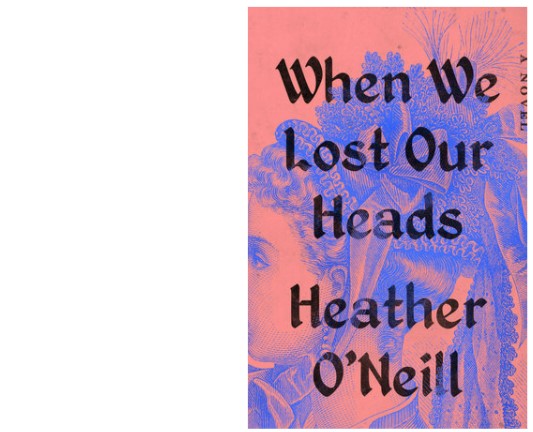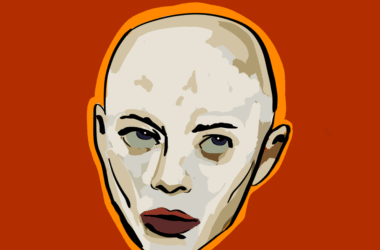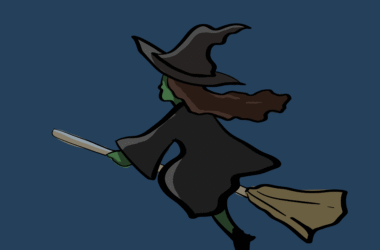“For there is no friend like a sister
In calm or stormy weather;
To cheer one on the tedious way,
To fetch one if one goes astray,
To lift one if one totters down,
To strengthen whilst one stands.”
Two little girls are tempted by sinister goblins in Christina Rossetti’s Victorian-era poem “Goblin Market,” but the power of sisterly love prevails and saves the younger sibling from certain death. Though the main characters of Montreal author Heather O’Neill’s new novel When We Lost Our Heads, Marie Antoine and Sadie Arnett, perform contrasting interpretations of the poem at a young ladies’ competition, both capture the adoration and infatuation of late 19th-century Montreal. Their power struggle for notoriety forges a friendship so passionate and inextricable that it threatens to change not only their fates, but that of the entire city when their actions spark an uprising within the working class. Spanning the course of the two girls’ lives, the novel spins a tale of tragic love, vitriolic jealousy, and the romance of violent revolution.
As the daughter of a sugar factory owner and the belle of upper-class Montreal society, Marie is born into great wealth. In the same privileged neighbourhood of the Golden Square Mile, Sadie lives with her family, whom she detests. She scribbles in her notebook and looks down on everyone she encounters—except Marie. Born from their obsession with one another and disdain for everyone else, Marie and Sadie’s relationship leads to the shocking murder of a maid, tearing the two apart as Sadie is exiled to a boarding school in England. Sadie begins a career as a writer of erotic tales while Marie accepts her fate as a future business mogul.
When they are reunited, Marie enters into an unhappy engagement to Sadie’s brother. Triggered by this union, amongst other betrayals, Sadie flees to the Squalid Mile, the industrial sector of the city steeped in crime and debauchery. Here is where O’Neill paints a tale of two cities most starkly: Those in the Golden Mile enjoy material luxuries, punctuated by the delights of sugar and tulle, while the unfortunate souls in the Squalid Mile live and die in grime and soot. The most poignant element of this contrast between rich and poor, clean and dirty, is that selfishness and deviance are always lurking in the shadows of both sides of the city.
With When We Lost Our Heads, O’Neill further solidifies her niche expertise of Montreal’s criminal underbelly, as she did with her 2007 Canada Reads winner Lullabies for Little Criminals. The setting serves as a backdrop for a retelling of the 1789 French Revolution as Marie and Sadie find themselves at odds in a worker’s struggle—complete with allusions to cake and Marie Antoinette—but one set from below Sherbrooke Street to the foot of Mount Royal. Factory workers start organizing against the foremen; the female struggle for safe working conditions and resistance against abuse takes centre stage. Instead of passing judgment, O’Neill lets her characters do the work by contrasting Marie and Sadie’s trivial conflict with the hardships faced by the residents of the Squalid Mile, from bloody factory accidents to botched abortions to filthy lodgings.
Just like the whip-smart intellect of Marie and Sadie, symbols are cleverly woven into the narrative. Every analogy drives home the notion that this is a fable about the precarity of power and how quickly it can be lost—threats of sexual violence cut across class lines, while class considerations cut across notions of female solidarity. These intersections are presented plainly, with no clear solution or moral reckoning; Sadie works as a prostitute, but by choice, thanks to her upper-class background. What propels the story is thus not moral judgments, but base emotions, like female rage.
But Marie and Sadie’s chaotic relationship remains the focal point; much as the side characters are bewitched by their love, or hatred, of these two women, so too are readers by their unflinching self-importance. We root for Marie and Sadie despite ourselves. A love like that, so obsessive and all-consuming, only breeds destruction. And eventually, their shared passion and outward disdain culminate in the ultimate tragic spectacle, as it should—being adored or reviled is what their entire lives depend on.
As O’Neill writes, “Every decent friendship comes with a drop of hatred. But that hatred is like honey in the tea. It makes it addictive.” With this bittersweet delicacy of a novel, readers will be entranced by every last drop.








